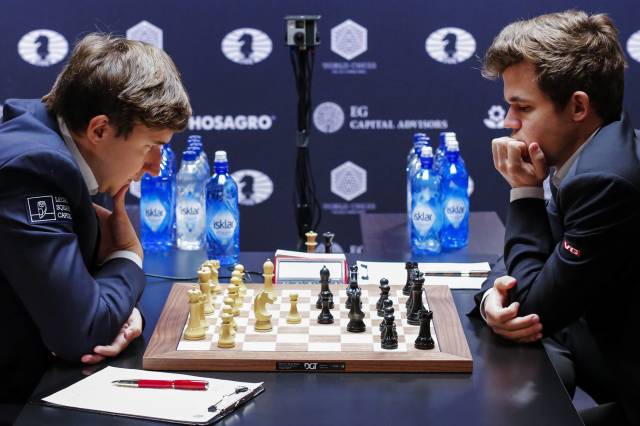Chess is a two-player strategy board game played on a checkered board with 64 squares arranged in an 8×8 square grid. Played by millions of people worldwide, chess is believed to be derived from the Indian game chaturanga sometime before the 7th century. Chess reached Europe via Persia and Arabia by the 9th century. The queen and bishop assumed their current powers in Spain in the late 15th century, and modern chess rules were standardized in the 19th century.
Play involves no hidden information. Each player begins with 16 pieces: one king, one queen, two rooks, two knights, two bishops, and eight pawns. Each piece type moves differently, with the most powerful being the queen and the least powerful the pawn. The objective is to checkmate the opponent's king by placing it under an inescapable threat of capture. To this end, a player's pieces are used to attack and capture the opponent's pieces, while supporting one another. During the game, play typically involves exchanging pieces for the opponent's similar pieces, and finding and engineering opportunities to trade advantageously or to get a better position. In addition to checkmate, a player wins the game if the opponent resigns, or in a timed game, runs out of time. There are also several ways a game can end in a draw.
By convention, chess game pieces are divided into white and black sets. In competitive games, the colors are allocated by the organizers; in informal games, the colors are usually decided randomly, for example by a coin toss, or by one player concealing a white pawn in one hand and a black pawn in the other, and having the opponent choose. White moves first, after which players alternate turns, moving one piece per turn (except for castling, when two pieces are moved). A piece is moved to either an unoccupied square or one occupied by an opponent's piece, which is captured and removed from play. With the sole exception of en passant, all pieces capture by moving to the square that the opponent's piece occupies.
Moving is compulsory. It is illegal to skip a turn, even when having to move is detrimental. A player may not make any move that would put or leave the player's own king in check. If the player to move has no legal move, the game is over and the result is either checkmate (a loss for the player with no legal move) if the king is in check, or stalemate if the king is not.

